

|
|
2,000 years ago...
...at the dawn of the first millennium A.D. the world's population was around 300 million people.
|
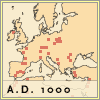

|
|
1,000 years later...
...the population had risen by as little as 10 million. And well into the
second millennium, it grew less than 0.1 percent each year. The numbers
in Europe even fell in the 1300s—struck down by the Black Plague.
But beginning in the late 18th century, the Industrial Revolution would
raise living standards and spur growth.
|
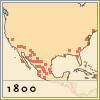

|
|
800 years later...
...the population had climbed to the landmark level of one billion people.
Almost 65 percent of all people lived in Asia, 21 percent in a prospering
Europe, and less than 1 percent in North America.
|


|
|
127 years later...
...the two-billionth baby was born. From 1920 to 1950, the population
growth rate hovered around 1 percent a year. But beginning in the middle
of the century, the advent of antibiotics and other public health advances profoundly altered life expectancy, increasing the number of children who would live to bear their own children.
|


|
|
33 years later...
...advances in medicine, agriculture, and sanitation had spread to many
places in the developing world. By 1960, the global population reached
three billion, and in the late 1960s the growth rate hit an all-time peak of
2.04 percent a year.
|
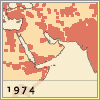

|
|
14 years later...
...new reproductive technologies had helped curb the growth rate.
But with so many people already on the planet, a population "explosion"
was under way, and the epicenters of the explosion lay in the developing
world. The four-billionth baby was born in 1974.
|
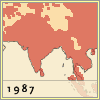

|
|
13 years later...
...the five-billionth baby was born.
|
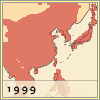

|
|
12 years later...
...around October 12, 1999, the six-billionth baby arrived. Today, Europe
and Africa each hold about 12 percent of the world's population. Nine percent live in Latin America, 5 percent in North America. And, just as in 1800,
Asia is home to the majority of Earth's inhabitants—roughly 61 percent,
or more than 3.5 billion people.
|


|
|
Roughly 50 years from now
Over the next half century, our numbers will increase again, likely to
a staggering nine billion people. Nearly all of this growth will take place
in developing countries, where the demand for food and water already outstrips supplies.
|
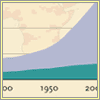

|
|
World Population Growth, 1800-2050
At the turn of the 21st century, almost 75 million people were being added to the earth every
year—about a quarter of the entire U.S. population. In the future, almost all population
growth will be in the developing world.
|

